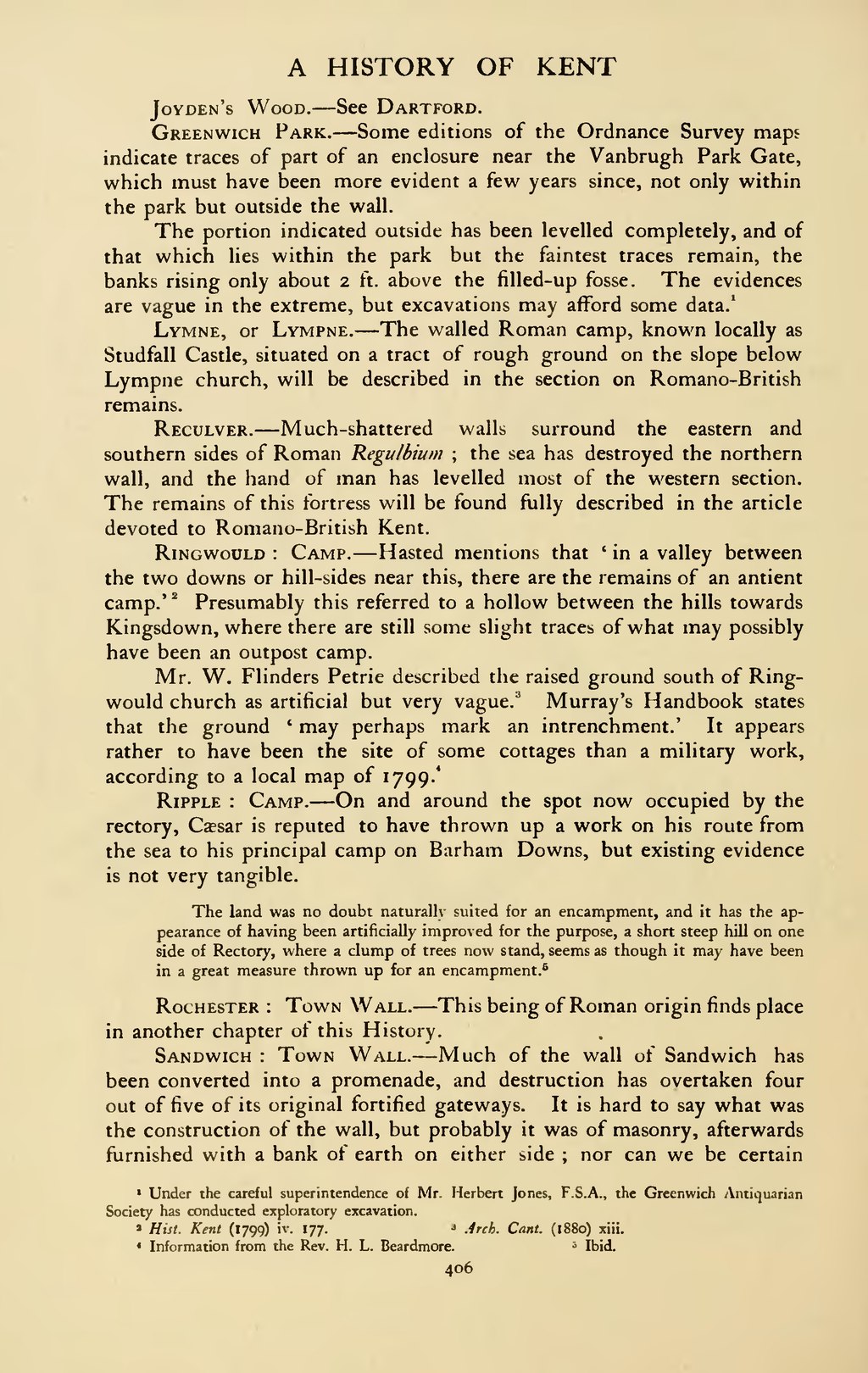A HISTORY OF KENT Joyden's Wood. — See Dartford. Greenwich Park. — Some editions of the Ordnance Survey maps indicate traces of part of an enclosure near the Vanbrugh Park Gate, which must have been more evident a few years since, not only within the park but outside the wall. The portion indicated outside has been levelled completely, and of that which lies within the park but the faintest traces remain, the banks rising only about 2 ft. above the filled-up fosse. The evidences are vague in the extreme, but excavations may afford some data.' Lymne, or Lympne. — The walled Roman camp, known locally as Studfall Castle, situated on a tract of rough ground on the slope below Lympne church, will be described in the section on Romano-British remains. Reculver. — Much-shattered walls surround the eastern and southern sides of Roman Regulbium ; the sea has destroyed the northern wall, and the hand of man has levelled most of the western section. The remains of this fortress will be found fully described in the article devoted to Romano-British Kent. RiNGwoULD : Camp. — Hasted mentions that ' in a valley between the two downs or hill-sides near this, there are the remains of an antient camp.' ^ Presumably this referred to a hollow between the hills towards Kingsdown, where there are still some slight traces of what may possibly have been an outpost camp. Mr. W. Flinders Petrie described the raised ground south of Ring- would church as artificial but very vague.' Murray's Handbook states that the ground ' may perhaps mark an intrenchment.' It appears rather to have been the site of some cottages than a military work, according to a local map of 1799.' Ripple : Camp. — On and around the spot now occupied by the rectory, Caesar is reputed to have thrown up a work on his route from the sea to his principal camp on Barham Downs, but existing evidence is not very tangible. The land was no doubt naturally suited for an encampment, and it has the ap- pearance of having been artificially improved for the purpose, a short steep hill on one side of Rectory, where a clump of trees now stand, seems as though it may have been in a great measure thrown up for an encampment.* Rochester : Town Wall. — This being of Roman origin finds place in another chapter of this History. Sandwich : Town Wall. — Much of the wall of Sandwich has been converted into a promenade, and destruction has overtaken four out of five of its original fortified gateways. It is hard to say what was the construction of the wall, but probably it was of masonry, afterwards furnished with a bank of earth on either side ; nor can we be certain ' Under the careful superintendence of Mr. Herbert Jones, F.S.A., the Greenwich Antiquarian Society has conducted exploratory excavation. > Hist. Kent (1799) iv. 177. ^ Arch. Cam. (1880) xiii. « Information from the Rev. H. L. Beardmore. '■> Ibid. 406
